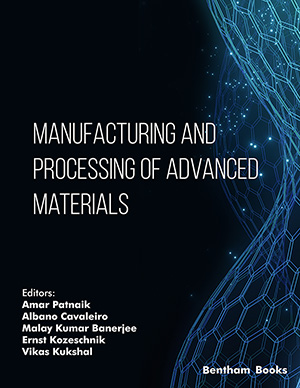Abstract
Spot welding of dissimilar materials Al6061 and SS304 with an interfacial
coating of Graphene Nano platelets (GNPs) by using the Resistance spot welding
(RSW) technique is described in this chapter. A thin layer of GNPs (a few micrometers
thick) is incorporated as an interlayer between Al6061/SS304 sheets (thickness 1 mm)
and spot welded in lap configuration. RSW parameters play a vital role in this joining
process. It was observed the strength of the lap joint increases with welding time and
current. The method of welding held up the metal ejection, which occurs at high
welding conditions. The influence of process parameters (welding current, time) on the
mechanical and microstructural properties of the spot-welded joint was evaluated in
detail. A tensile test was carried out in lap-shear mode to evaluate the strength of the
joint and to determine the peak load. The fusion zone and the weld nugget were
characterized by Scanning Electron microscopy and hardness analysis. SEM analysis
observes that Fe and Al matrix well looped around the Graphene particles leads to the
formation of inter-metallic compounds of Fe-GNP, Al- GNP, and Fe-Al-GNP at the
joint interface. The results are compared with the properties of joints without and with
GNP interlayer. It was found that the GNP interlayer enhances the properties of the
spot-welded joint and increases joint strength. Possible strengthening mechanisms
include enhanced grain refinement and dislocation pile-ups in the presence of the
GNPs.
Keywords: Dissimilar welding, Graphene nanoplatelets, Interfacial coating, Lap joints, Resistance spot welding




















